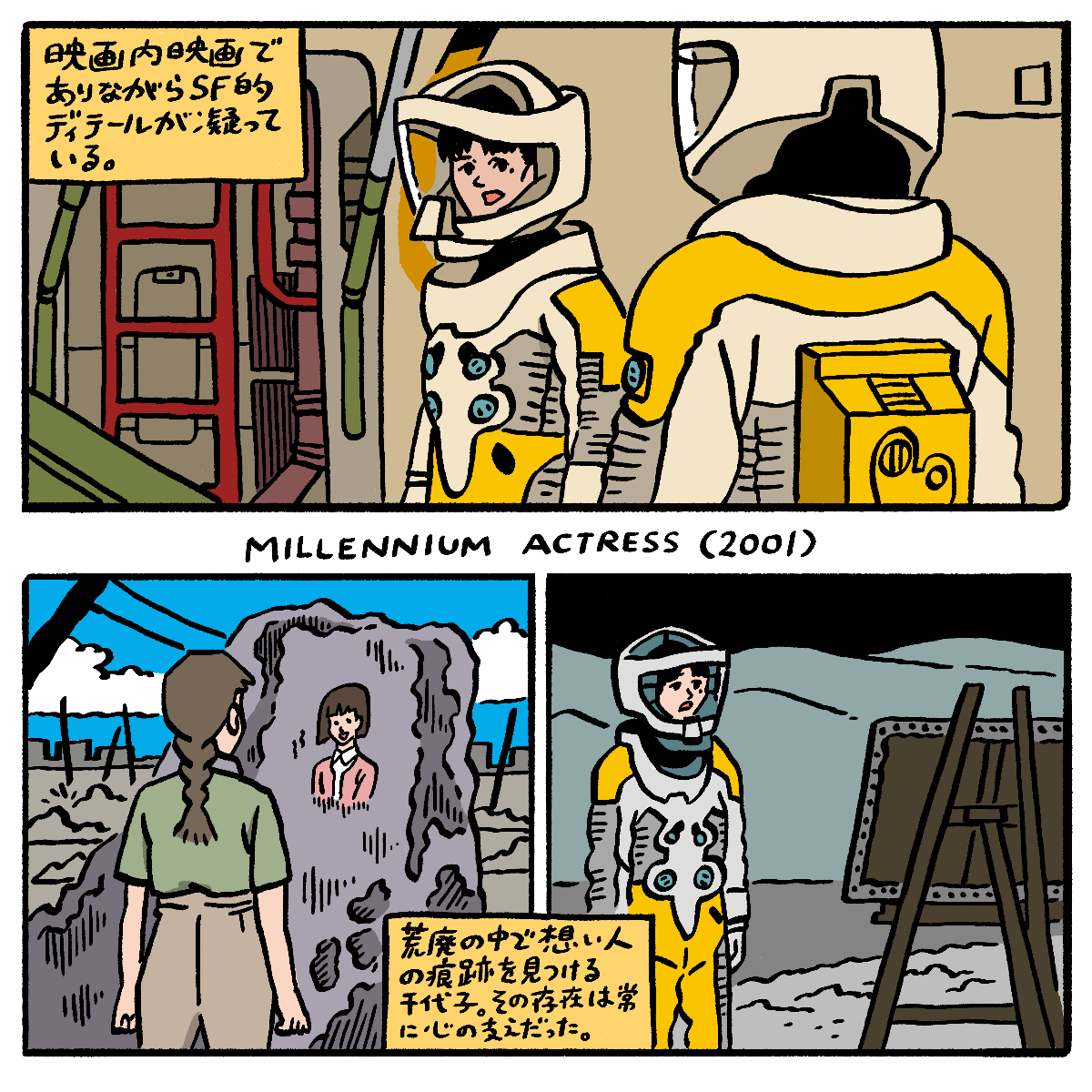![Satoshi Kon's work where fiction and reality intermingle [Mizumaru Kawahara's CINEMONOLOGUE Vol.61]](https://cinemore.jp/images/0d8638030074baca01d26bb54cebaab45352041a5c317ac77badd9505f8fbe2e.png)
Satoshi Kon's work where fiction and reality intermingle [Mizumaru Kawahara's CINEMONOLOGUE Vol.61]
“Millennium Actress” runs through movies and reality

`` Millennium Actress '', whose main character is an actress who has walked a completely different path than Mima, is also a work overflowing with love for movies. Tachibana, who is a big fan of Chiyoko Fujiwara and wants to make a documentary about her, comes to see Chiyoko Fujiwara, a retired actress, and begins interviewing her. By following the story of Chiyoko's life, which she shared during an interview she agreed to do for the first time in 30 years, you can also see a brilliant picture scroll of Japanese film history. There is a wonderful horizontal scene in which Chiyoko rides a horse through a battle during the Sengoku period, and then changes to a rickshaw at the end of the Edo period, Meiji period, and Taisho period. It's fun to watch the homages to Yasujiro Ozu, Akira Kurosawa, Godzilla, and more.
However, it gradually becomes clear that Chiyoko's memories and the contents of the movie are intermingled and muddy. Where does it end with actual experience and where does it start with the movie? This is similar to the confusion in `` Perfect Blue '' where delusion begins and reality ends, and here too the boundary between fiction and reality begins to wobble. This time, it's interesting to see the interviewer Tachibana actively interfering in the scene, half acting as a Kyogen play, and helping Chiyoko in the flashbacks.
At the center of Chiyoko's life was a man named ``Kagi no Kimi'' who saved her when she was being chased by authorities when she was a young girl. He doesn't even know her name, but he hands Chiyoko the ``key to unlock the most important thing'' that he wears around his neck, and they vow to meet again. From here, Chiyoko's life of dreaming of reuniting with Kagi no Kimi begins. She rushes from movie to movie as if chasing Kagi no Kimi, and the sense of speed is also part of the fun of this work.
My favorite part of this episode is how Chiyoko's film world, which has shown various eras and genres, reaches science fiction. Despite being a movie within a movie, Chiyoko, dressed in a stylish space suit (yet still giving off the impression that it's a prop from a movie), boards an elaborately designed rocket. On the moon, Chiyoko finally finds a picture drawn by Kagi no Kimi, but Chiyoko can't catch up with the figure walking on the snowy field in the picture (the way the snowy field intersects with the moon's surface is also spectacular). The scene where they find the painting on the moon overlaps with the scene where they find Chiyoko's painting, which was left behind by Kagi no Kimi, in the burnt-out ruins of the air raid. A picture found in the dead world of the moon and the remains of destruction caused by air raids. Even if it's the latter, I'm not sure if I've actually found such a picture, but no matter how painful and emotionally devastated Chiyoko was, the key person she met when she was a girl somehow became her hope. Isn't it?
In the real world, Chiyoko collapses and is taken to the hospital. Just as Chiyoko closes her eyes and is about to bring the curtain down on her long life, Chiyoko, wearing a spacesuit, prepares to depart on a rocket. The cutting edge of film is science fiction, which makes extensive use of special effects, and because space is a world that is both death and newness, it can be said to symbolize the end of the film and Chiyoko's departure. ``Millennium Actress'' is a story where film and reality intertwine, but it is also a story about memory and reality. Which is true? That's not really important, it's just how Chiyoko perceives the "story" and how her life, the movie, and her feelings for Kagi no Kimi are so closely connected and inseparable. All you need to know is that.
``Paprika'' where dreams invade reality

